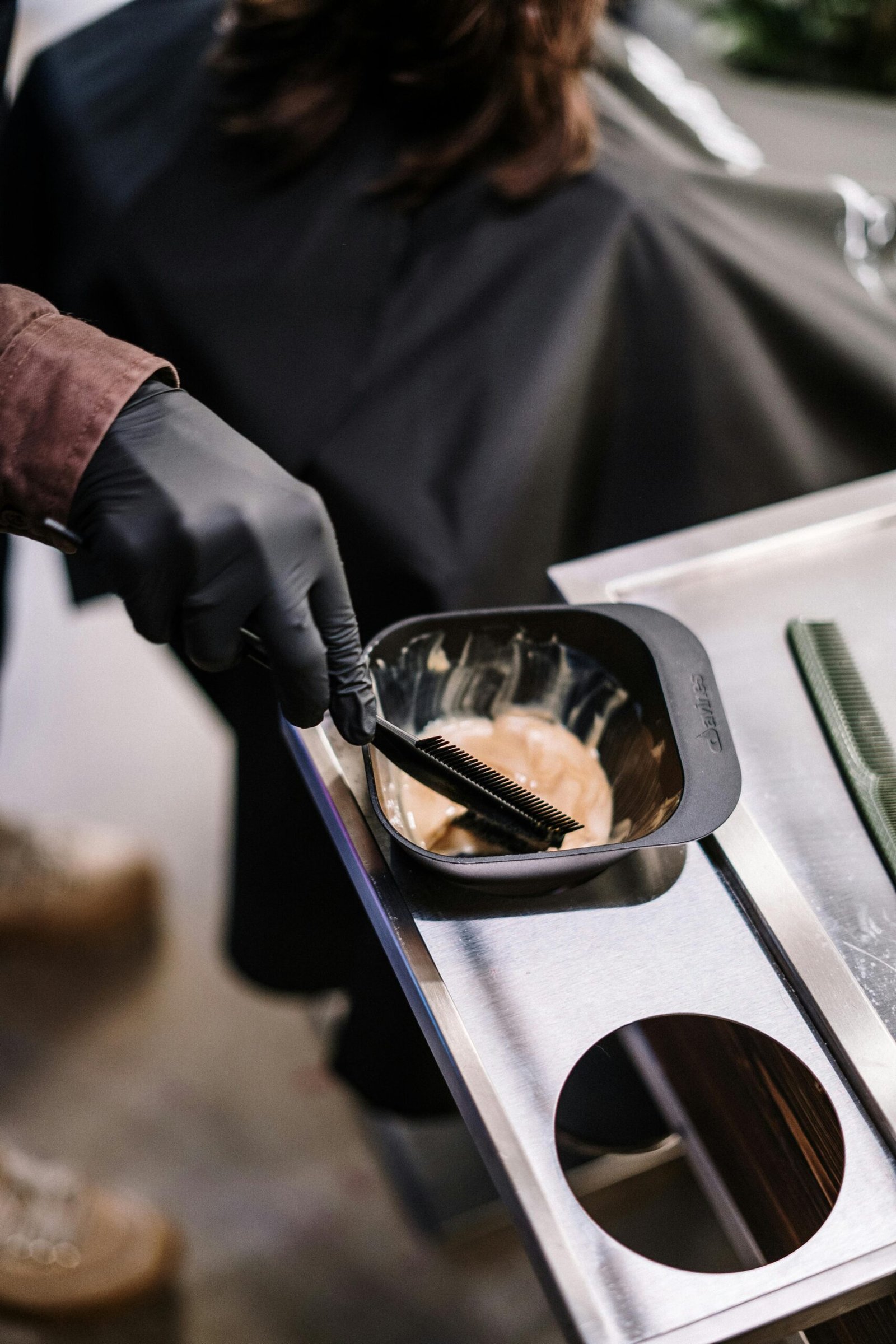Let’s break down the science behind hair coloring, discussing different techniques, trends, and aftercare:
1. Science of Hair Coloring:
- Melanin:
- Hair color is primarily determined by the presence and ratio of melanin pigments (eumelanin and pheomelanin) in the hair shaft.
- Color Change Process:
- Hair color changes when the natural pigments are altered. This can be achieved through oxidation or reduction reactions.
2. Hair Coloring Techniques:
- 1. Permanent Hair Color:
- Uses ammonia and peroxide to lift and deposit color, making it long-lasting.
- 2. Semi-Permanent Hair Color:
- Deposits color onto the hair without lifting the natural pigment, making it less damaging and temporary.
- 3. Balayage:
- Hand-painted highlights create a natural, sun-kissed effect with a softer regrowth line.
- 4. Ombre:
- Gradual blending from one color to another, usually from darker roots to lighter ends.
- 5. Foiling:
- Sections of hair are wrapped in foils to isolate them, allowing for precise color placement.
3. Hair Coloring Trends:
- 1. Pastel Colors:
- Soft, muted shades like lavender and rose gold remain popular for a subtle, trendy look.
- 2. Root Smudging:
- Blurring the line between the root color and the rest of the hair for a seamless, low-maintenance style.
- 3. Dimensional Brunettes:
- Adding depth and dimension to brown hair with a mix of lighter and darker tones.
- 4. Money Piece Highlights:
- Bright, face-framing highlights for a bold and attention-grabbing effect.
- 5. Color Melting:
- A seamless blend of multiple colors for a soft, natural transition.
4. Aftercare Tips:
- 1. Use Sulfate-Free Shampoo:
- Sulfates can strip color; opt for sulfate-free, color-safe shampoos.
- 2. Cold Water Rinse:
- Wash hair with cold water to help seal the hair cuticle and maintain color vibrancy.
- 3. Deep Conditioning:
- Regular deep conditioning treatments to keep hair moisturized and healthy.
- 4. UV Protection:
- Protect colored hair from UV rays with hats or UV protection sprays.
- 5. Limit Heat Styling:
- Minimize the use of heat styling tools to prevent color fading and damage.
- 6. Color-Depositing Products:
- Use color-depositing conditioners to refresh and maintain color between salon visits.
5. Professional Consultation:
- Always consult with a professional colorist for personalized advice based on your hair type, condition, and desired results.
Understanding the science behind hair coloring helps you make informed choices and maintain vibrant, healthy-colored hair. Keep in mind that individual results may vary.




